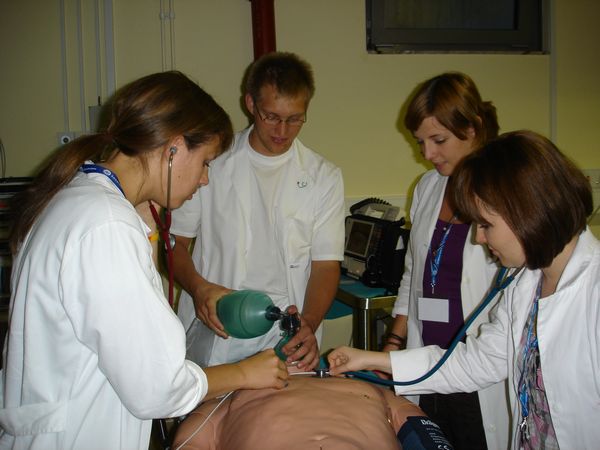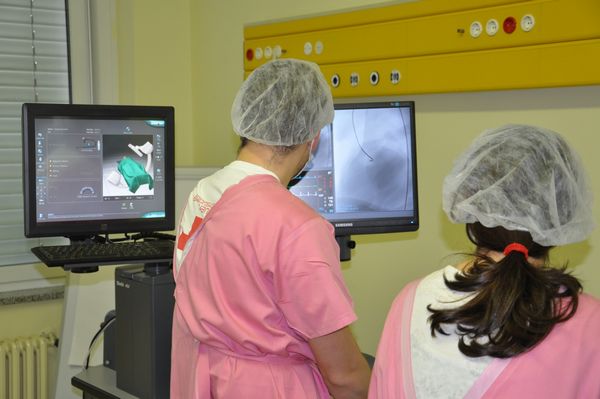Simulation of clinical conditions is in all its forms a very important and connective method of learning for physicians and other healthcare workers. It represents a foundation for obtaining clinical experience, confidence in knowledge, skills and attitudes, as it also increases the level of patients’ safety and decreases frequency of undesirable errors.
Since 2010 high-tech simulation is constantly used in the education process of medical students at our medical school. With the opening of the Simulation Center, acquisition of modern simulation equipment and faculty training, all the criteria for implementing a modern medical simulation program have been met.
In the basement of the new building for Otorhinolaryngology at University Medical Center Maribor, where the technically complex simulator – Human Patient Simulator (HPS) of the Simulation Center is, simulations are regularly performed within different curricular subjects (Internal medicine, Emergency medicine, Anesthesiology, Pediatrics and Surgery).
HPS (Photo 1) is the golden standard for medical training in simulations. HPS is an automated simulator mainly designed for training of emergency situations, anesthesia and trauma. The simulator allows the exchange of respiratory gases, anesthesia induction and maintenance, and patient monitoring with real clinical devices. HPS possesses a unique mathematically-technical model of the human physiology, which includes cardiac, respiratory, neurological and pharmacological components. On the HPS, both uncomplicated clinical skills and as well as sophisticated pathological scenarios from fields of internal medicine, reanimation procedures, anesthesia, cardiology, neurology, trauma and pharmacology can be trained. |  Photo 1: Students during practice on HPS. |
| The Simulation center also features several specialized simulators for endoscopic interventions in fields of gastroenterology and pulmology, cardiology, radiology, laparoscopic surgery, laparoscopic gynecology and obstetrics. |  Photo 2: students during practice on invasive cardiology diagnostics |




